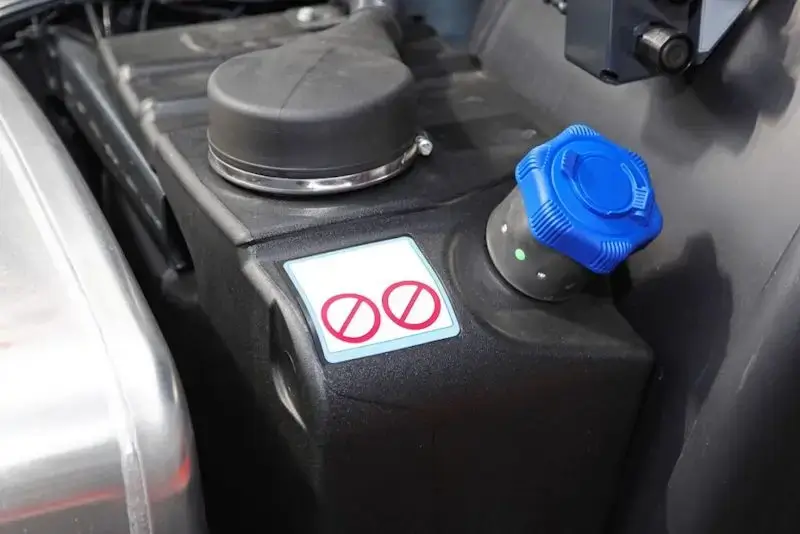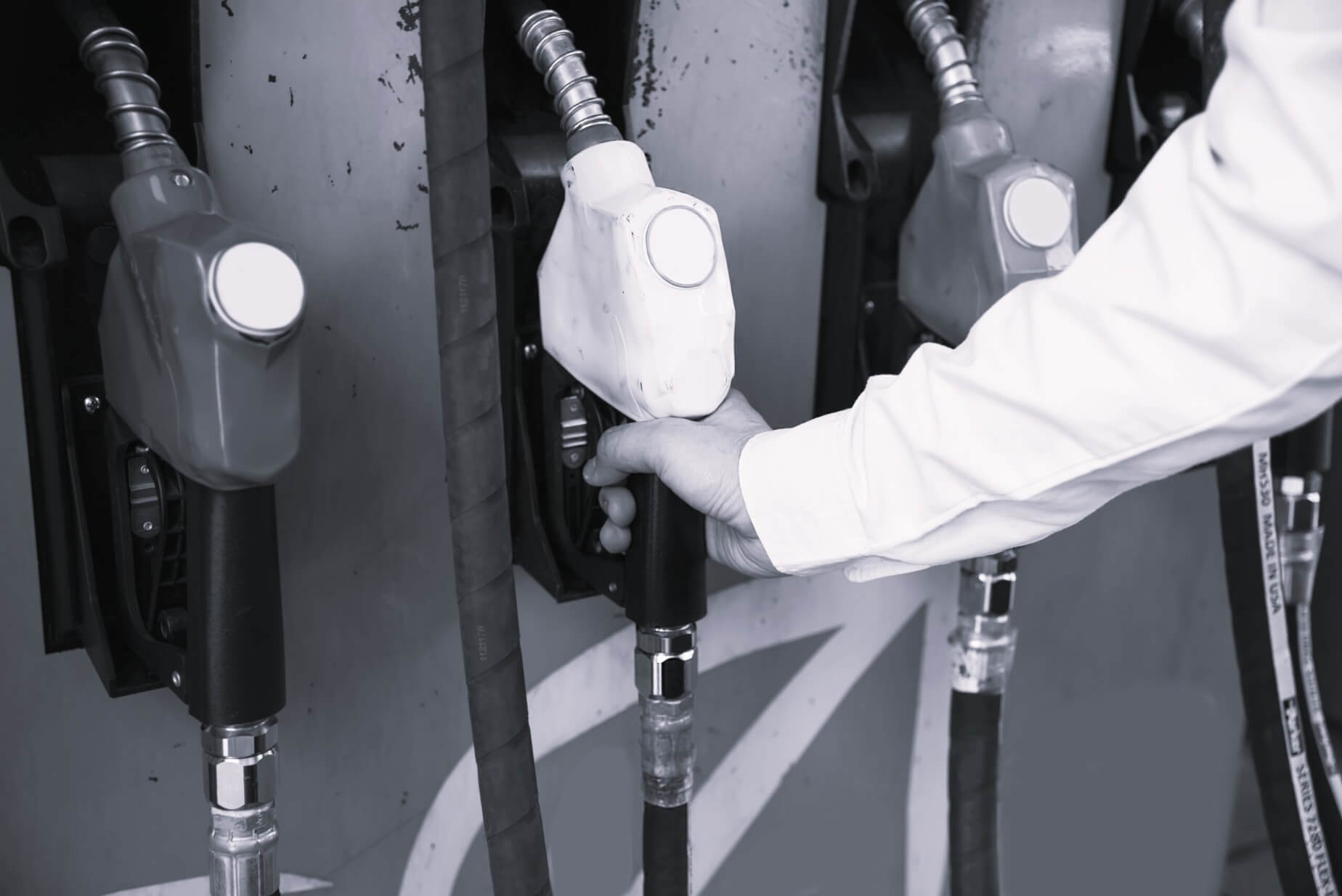Diesel Exhaust Fluid: Key Facts About DEF Tanks
Welcome to the world of DEF tanks, where innovation and sustainability come together! As industries strive to reduce emissions and combat environmental challenges, Diesel Exhaust Fluid (DEF) has emerged as a crucial solution. Since around 2010, nearly all diesel-powered vehicles, including those with high horsepower and torque engines, have been equipped with Selective Catalytic Reduction (SCR) systems.
This means that they rely on diesel exhaust fluid (DEF) for proper functioning. Let’s delve into the fascinating realm of DEF tanks and learn some key facts.

Understanding Diesel Exhaust Fluid (DEF)
DEF (Diesel Exhaust Fluid) consists of a non-hazardous solution with 32.5% urea and 67.5% deionized water. Manufacturers specifically design it to reduce nitrogen oxide (NOx) emissions in diesel engines through selective catalytic reduction (SCR) systems.
This innovative technology helps vehicles, especially heavy-duty trucks, to work according to emission guidelines, thus promoting a cleaner and pollution-free environment.
What Is A Diesel Exhaust Fluid DEF Tank?
A DEF Tank is a container that holds Diesel Exhaust Fluid (DEF) in vehicles equipped with Selective Catalytic Reduction (SCR) systems. It is a separate tank from the diesel fuel tank. The DEF tank stores DEF until the system needs to inject it into the vehicle’s exhaust.
The vehicle’s engine control system regulates the amount of DEF it injects, which helps reduce harmful emissions. Drivers need to ensure the DEF tank is regularly filled, just like the fuel tank, to keep the SCR system working effectively and minimize harmful pollutants.
What Does A DEF Tank Do?
A DEF tank serves a crucial role in reducing emissions and making diesel engines more eco-friendly. Its primary function is to store Diesel Exhaust Fluid (DEF). When a vehicle with a DEF tank has a Selective Catalytic Reduction (SCR) system, the DEF is injected into the exhaust stream.
As the exhaust gases pass through the SCR system, they come into contact with the DEF, which triggers a chemical reaction. This reaction converts harmful nitrogen oxides (NOx) in the exhaust into harmless nitrogen and water vapor. As a result, the vehicle’s emissions become significantly less harmful to the environment, contributing to cleaner air and reduced pollution.
How Much Does A DEF Tank Hold?
The size of a Diesel Exhaust Fluid (DEF) tank can vary depending on the vehicle and its application. Generally, the capacity of DEF tanks ranges from 5 to 25 gallons (approximately 19 to 95 liters).
Commercial vehicles, such as heavy-duty trucks and buses, tend to have larger DEF tanks to accommodate their higher fuel consumption rates and longer distances between refills. Manufacturers design the DEF tank’s capacity to match the vehicle’s diesel fuel consumption, ensuring that drivers typically refill both the diesel and DEF tanks at roughly the same intervals.
How Much Does A DEF Tank Cost?
The cost of a DEF tank can vary depending on several factors, including its size, material, and whether it’s a standalone replacement tank or a part of the vehicle’s original equipment.
What Is A DEF Tank In A Truck?
DEF Tanks for heavy-duty or any delivery truck are a common thing now. A DEF tank in a truck refers to a container that holds Diesel Exhaust Fluid (DEF). This tank is an integral part of trucks equipped with Selective Catalytic Reduction (SCR) systems.
Drivers of trucks with DEF tanks must keep the tank filled with DEF regularly, similar to refueling the diesel fuel tank, to ensure the SCR system works effectively and maintains low emission levels.

What Is A DEF Tank On A Car?
Similar to trucks, light-duty vehicles and cars are also equipped with SCR systems. This innovation cleans the air before being emitted. As a car owner, it’s essential to keep the DEF tank filled regularly, much like refueling the gasoline or diesel tank, to ensure efficiency.
Key Facts You Should Know About DEF & DEF Tanks
So let us discuss some of the crucial details about DEF and DEF Tanks:
- It is a non-toxic and non-flammable solution.
- Maintaining the DEF tank is crucial, as it needs to be replenished regularly. Drivers should monitor DEF levels and ensure they refill the tank before it runs empty.
- DEF tanks are separate from the vehicle’s fuel tank and have their dedicated filling ports. One should never put DEF into the fuel tank, as it will cause engine damage.
- DEF freezes below 12°F (-11°C) but won’t damage the DEF tank. When thawed, it regains its original properties and can be used without issues.
- DEF and SCR technology helps reduce air pollution, making diesel engines more eco-friendly and compliant with stringent emission regulations.
How Should I Properly Handle And Store DEF?
Following are some of the instructions to properly handle and store DEF:
| Do’s | Don’t’s |
| DEF should be stored in a cool, dry, and well-ventilated area, away from direct sunlight | To prevent exposure to air and debris, don’t leave DEF containers open when not in use. |
| It should be used only in vehicles equipped with SCR systems. | Do not mix DEF with any other fluids, such as diesel or water. It can damage the SCR system. |
| Keep an eye on the DEF container’s expiration date. It is mandatory to use it before that date. | Do not reuse containers that previously held other substances, as cross-contamination can occur. Do not store DEF in unapproved containers or those made of materials that can interact with it. |
Are There Any Requirements For A DEF Storage Tank?
While cold weather doesn’t significantly impact DEF, it’s essential to be cautious about heat and extended exposure to sunlight as they can lead to its degradation. So, the following are some of the tips which should be considered:
- Material: Since Urea has corrosive properties that can cause damage to aluminum, the storage tank should be made of non-reactive materials, such as high-density polyethylene (HDPE) or stainless steel, to prevent contamination or chemical reactions.
- Sealing: The tank must be tightly sealed to prevent DEF from exposure to air, which can cause degradation.
- Ventilation: The tank should have proper ventilation to prevent the buildup of pressure and maintain DEF quality.
- Temperature: To maintain the quality of Diesel Exhaust Fluid (DEF), it should be stored in a cool and dry environment. The recommended storage temperature ranges from 12°F (11°C) to 86°F (30°C).
How Do I Know When My DEF Tank Is Full?
Knowing when your Diesel Exhaust Fluid (DEF) tank is full depends on the specific vehicle or equipment you are using. Most modern vehicles equipped with Selective Catalytic Reduction (SCR) systems have a DEF gauge or indicator on the dashboard that shows the DEF level.
How Do I Know If My DEF Tank Is Close To Empty?
When your Diesel Exhaust Fluid (DEF) tank is nearly empty, you will typically receive warning messages or indicators on your vehicle’s dashboard.
Common warning messages or indicators may include:
- “Low DEF” or “DEF Level Low”
- A DEF symbol or icon with a low-level indicator
When you see these warning messages or indicators, you will get to know that it’s time to refill the DEF tank promptly.
What Happens If My DEF Tank Is Empty?
If your Diesel Exhaust Fluid (DEF) tank is empty, your vehicle’s selective catalytic reduction (SCR) system will not be able to convert harmful nitrogen oxides (NOx) into less toxic substances. As a result, your vehicle may fail to meet emissions regulations, and its performance may be affected.
Refilling the DEF tank is essential to ensuring the proper functioning of the SCR system and compliance with environmental standards.
What Other Things Should I Need Aside From Having A DEF Tank?
Apart from having a DEF Tank, it’s important to have some important accessories to prevent any issue with the SCR system:
Air Vent: The air vent allows air to escape from the DEF tank as it is being filled. It helps prevent pressure build-up and ensures a smooth and efficient filling process.

Hose Kit: The hose kit is used to connect the DEF tank to the dispensing equipment. It facilitates the transfer of DEF from the storage tank to the vehicle’s DEF tank or other containers.
Valve: The valve is a control mechanism that regulates the flow of DEF through the hose. It allows you to start, stop, or control the rate of DEF transfer during refueling or dispensing operations.

Adapter: An adapter is used to connect the hose to the DEF tank or dispensing equipment. It ensures a secure and leak-free connection during the transfer process.

Fuel Pump: The fuel pump is responsible for pumping DEF from the storage tank to the vehicle’s DEF tank. It maintains a consistent flow rate, enabling efficient refueling and distribution of DEF.
Where Can I Order DEF?
DEF plays a crucial role in controlling air pollution by reducing harmful emissions. So, whether you are a fuel manager for a fleet company, a construction manager, or any business owner, DEF is essential for your machines to have at all times. We deliver to any business across the U.S.
Fuel Logic is simplifying the acquisition and management of DEF in the United States. It customizes its DEF solutions to cater to your specific diesel exhaust fluid delivery requirements. Fuel Logic streamlines the process of bulk DEF fluid delivery, offering services such as tank refill, truck and fleet monitoring, and tote delivery.

Our U.S.-based services are designed to adapt your business schedule for maximum convenience and reliability. Contact Fuel Logic today!





